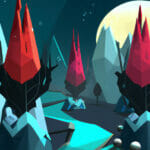Welcome to this unique and exciting tutorial focusing on Roblox GUI scripting. As gaming continues to evolve with remarkable speed and technology advancements, it is only imperative to keep up with the latest trends and skills desired in the industry. One such essential skill is GUI scripting within Roblox, a popular platform used by creators worldwide to design and play immersive 3D games.
Table of contents
What is Roblox GUI Scripting?
GUI, standing for Graphical User Interface, is a visual-based interface that allows interaction with a game or application. In Roblox, GUI scripting primarily involves generating dynamic user interfaces in games. While Roblox provides a baseline user interface, GUI scripting goes a step further, allowing game developers to create custom, interactive gameplay elements and interfaces.
Why Should You Learn It?
The beauty of learning GUI scripting in Roblox lies in its limitless potential to enhance a user’s gaming experience. It provides the controls for players to interact with the gaming world, meaning a well-crafted, user-friendly GUI can significantly impact a game’s success.
Additionally, Roblox game development is a high-demand skill, with successful developers making a livelihood out of their creations. As such, gaining a deep understanding of GUI scripting stands to open up tremendous opportunities in this fast-growing gaming platform.
Getting Started with Roblox GUI Scripting
Before we dive into coding, let’s ensure we have the Roblox Studio installed, the official development environment for Roblox. If not yet installed, you can download it from the Roblox website.
Next, we will learn how to create simple GUI components such as Buttons and Labels. This forms the foundation of GUI Scripting in Roblox.
Creating a ScreenGui component
ScreenGui is the base container for any GUI component. You create it in Roblox Studio as follows:
local ScreenGui = Instance.new('ScreenGui')
ScreenGui.Parent = game.Players.LocalPlayer:WaitForChild('PlayerGui')Creating a TextLabel component
A TextLabel is a component that can display a string of text on the screen. Here’s how you create a TextLabel:
local TextLabel = Instance.new('TextLabel')
TextLabel.Text = "Hello, World!"
TextLabel.Parent = ScreenGuiCreating a TextButton component
TextButton is a clickable text element on the screen. Here’s the code snippet to create it:
local TextButton = Instance.new('TextButton')
TextButton.Text = "Click Me!"
TextButton.Parent = ScreenGuiBinding an event to a TextButton
For our button to perform an action when clicked, we need to bind a function to its MouseButton1Click event. The following code illustrates this:
TextButton.MouseButton1Click:Connect(function()
print("Button clicked!")
end)By this point, you should have a decent understanding of creating and interacting with basic GUI components within Roblox. Next, we will delve into more advanced topics like scaling GUI components and creating custom game menus.
Scaling GUI Elements
A scalable GUI ensures that your game interfaces look consistent across diverse screen resolutions and devices. Roblox offers a special type of property called UDim2 for this purpose.
The following example sets the size of a TextButton using UDim2, making it occupy half the screen’s width and a quarter of the screen’s height:
TextButton.Size = UDim2.new(0.5, 0, 0.25, 0)
Creating a Custom Game Menu
Here, we take a bold leap towards creating our very own custom game menu, creating a Frame component that will act as a container for all other UI elements and scripts relative to our game menu:
local Frame = Instance.new('Frame')
Frame.Size = UDim2.new(1, 0, 1, 0)
Frame.Parent = ScreenGuiLet’s go ahead and add a title to our game menu using a TextLabel component:
local TitleLabel = Instance.new('TextLabel')
TitleLabel.Text = "Game Menu"
TitleLabel.Size = UDim2.new(1, 0, 0.1, 0)
TitleLabel.Parent = FrameThe next step is creating a start button. We employ a TextButton component for this:
local StartButton = Instance.new('TextButton')
StartButton.Text = "Start Game"
StartButton.Size = UDim2.new(0.5, 0, 0.1, 0)
StartButton.Position = UDim2.new(0.25, 0, 0.3, 0)
StartButton.Parent = FrameFinally, we must ensure that clicking the start button will trigger the game’s start. For that, let’s bind a function to its MouseButton1Click event:
StartButton.MouseButton1Click:Connect(function()
print("Game started!")
-- Insert game starting code here
end)With these steps, we now have a basic custom game menu, further exemplifying the power of GUI scripting in Roblox.
Dealing with Visibility
Toggle visibility of your custom game menu is essential, especially when your game starts or whenever necessary. We control this using the “Visible” property of the Frame.
To hide the game menu, simply turn the “Visible” property off:
Frame.Visible = false
And if you want to show the menu again, just set the “Visible” property back to true:
Frame.Visible = true
Adding Functionality to Buttons
Next, let’s take our script to another level by adding more functionality. For instance, we can add an exit button to our menu.
local ExitButton = Instance.new('TextButton')
ExitButton.Text = "Exit Game"
ExitButton.Size = UDim2.new(0.5, 0, 0.1, 0)
ExitButton.Position = UDim2.new(0.25, 0, 0.5, 0)
ExitButton.Parent = FrameWe should ensure the exit button’s functionality by binding an event to it. The following line of code simulates exiting the game by hiding our game menu:
ExitButton.MouseButton1Click:Connect(function()
Frame.Visible = false
end)Advanced Techniques
As you become more fluent with GUI scripting in Roblox, you might want to explore more advanced techniques for better game interfaces. For example, you can animate GUI elements to make your game interfaces more dynamic and appealing:
local TweenService = game:GetService("TweenService")
local tween = TweenService:Create(
StartButton,
TweenInfo.new(2),
{Size = UDim2.new(1, 0, 0.2, 0)}
)
tween:Play()This example uses the TweenService to animate the start button’s width over two seconds.
Through these examples, we’ve shown you how powerful GUI scripting is in Roblox. The ability to create interactive, dynamic and animated game interfaces opens up infinite opportunities to influence the user experience in your games. With some creativity and practice, you can create outstanding game interfaces, making playing your game another immersive, exceptional experience.
Where to go next with your Roblox GUI journey?
Now that you’re familiar with the basics of GUI scripting in Roblox, you might be wondering, “What’s next?” The world of Roblox game development is vast and exciting, and there’s so much more for you to explore and learn.
One way to continue your journey into Roblox game creation is by checking out our Roblox Game Development Mini-Degree. This comprehensive collection covers a variety of genres and teaches useful skills like multiplayer functionality and leaderboards. Even better, the curriculum is project-based, letting you build a portfolio while you learn.
For a broader collection, have a look at our Roblox courses where you will find numerous courses covering a range of topics, not only in Roblox, but also in other areas of game development. At Zenva, we believe in making learning as fun and engaging as playing games. We have over 250 supported courses available for learners of all levels, from beginner to professional. So why wait? Join us today and continue your journey in creating immersive gaming experiences.
Conclusion
In this tutorial, we’ve taken the first steps towards mastering GUI scripting in Roblox – a powerful toolkit that can truly set your games apart. Remember, creating immersive, visually-pleasing games extends beyond mere aesthetics; it also revolves around the user experience. With GUI scripting, you can interact with users in new and engaging ways, making your games more enjoyable and memorable.
At Zenva, we’re committed to nurturing the potential of every developer. Whether you’re a newbie or gaming guru, our Roblox Game Development Mini-Degree offers invaluable insights and technical skills to empower you in your creative journey. Start weaving your gaming narratives today and become a part of our robust, thriving community!
Did you come across any errors in this tutorial? Please let us know by completing this form and we’ll look into it!

FINAL DAYS: Unlock coding courses in Unity, Godot, Unreal, Python and more.







